FINDING OBLIQUE ASYMPTOTES OF RATIONAL FUNCTIONS
A slant (oblique) asymptote occurs when the polynomial in the numerator is a higher degree than the polynomial in the denominator.
To find the slant asymptote you must divide the numerator by the denominator using either long division or synthetic division.
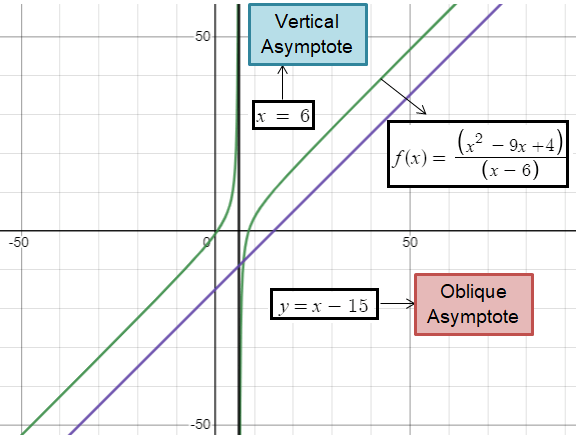
Find the oblique asymptote of the rational function
Problem 1 :
f(x) = (x2 + 8x – 20)/(x – 1)
Solution :
Given, f(x) = (x2 + 8x – 20)/(x – 1)
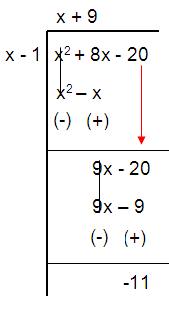
y = (x + 9) -11/(x – 1)
So, the oblique asymptote of the rational function is
y = x + 9
Find the oblique asymptote of the rational functions :
Problem 2 :
f(x) = (6x3 – 1)/(-2x2 + 18)
Solution :
f(x) = (6x3 – 1)/(-2x2 + 18)
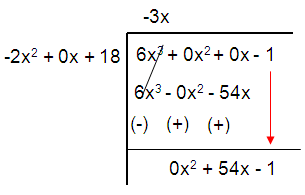
y = -3x + (0x2 + 54x – 1)/(-2x2 + 0x + 18)
So, the oblique asymptote of the rational function is
y = -3x.
Problem 3 :
f(x) = (2x2 + x – 5)/(x + 1)
Solution :
f(x) = (2x2 + x – 5)/(x + 1)
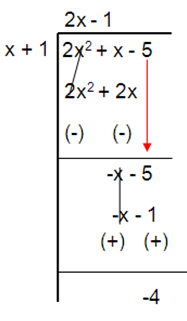
y = (2x – 1) + (-4)/(x + 1)
So, the oblique asymptote of the rational function is
y = 2x - 1
Problem 4 :
f(x) = (2x2 - 5x + 3)/(x – 1)
Solution :
f(x) = (2x2 - 5x + 3)/(x – 1)
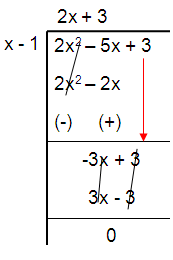
y = (2x + 3) + 0/(x - 1)
So, the oblique asymptote of the rational function is
y = 2x + 3
Problem 5 :
f(x) = (2x2 - 5x + 5)/(x – 2)
Solution :
f(x) = (2x2 - 5x + 5)/(x – 2)
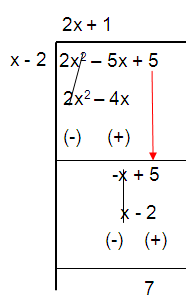
y = (2x + 1) + 7/(x - 2)
So, the oblique asymptote of the rational function is
y = 2x + 1
Problem 6 :
f(x) = (x3 - 2x2 + 5)/x2
Solution :
f(x) = (x3 - 2x2 + 5)/x2
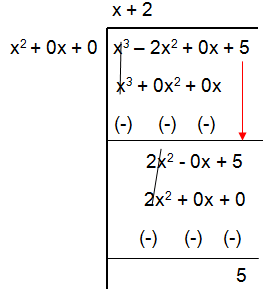
y = (x + 2) + 5/x2
So, the oblique asymptote of the rational function is
y = x + 2
Identify the vertical and oblique asymptotes of the following rational function.
Problem 7 :
f(x) = (x3 - x2 - x - 1)/(x – 3) (x + 4)
Solution :
f(x) = (x3 - x2 - x - 1)/(x – 3) (x + 4)
x – 3 = 0
x = 3
x + 4 = 0
x = -4
Vertical asymptotes at x = 3 and -4.
f(x) = (x3 - x2 - x - 1)/(x – 3) (x + 4)
= (x3 - x2 - x - 1)/(x2 + 4x – 3x – 12)
f(x) = (x3 - x2 - x - 1)/(x2 + x – 12)
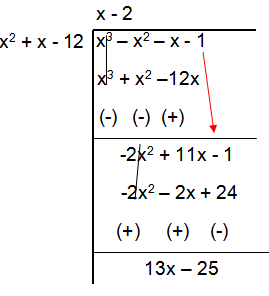
f(x) = (x – 2) + 13x – 25/(x2 + x – 12)
So, the oblique asymptote of the rational function is
y = x – 2.
Find the asymptotes and intercepts of the function:
Problem 8 :
f(x) = x3/(x2 – 4)
Solution :
f(x) = x3/(x2 – 4)
Horizontal Asymptote :
Degree of numerator > degree of denominator
So, there is no horizontal asymptotes.
Vertical asymptote :
x2 – 4 = 0
(x + 2) (x – 2) = 0
x + 2 = 0 and x – 2 = 0
x = -2 x = 2
Vertical asymptotes at x = -2 and 2.
Oblique asymptote :
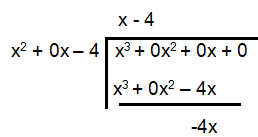
Oblique asymptote is at y = x-4.
x – intercept :
x – intercepts occurs when y = 0.
f(x) = x3
0 = x3
x = 0
So, the x – intercepts is (0, 0).
y – intercept :
y – intercepts occurs when x = 0.
f(x) = 0/(0 – 4)
f(0) = 0/4
f(0) = 0
So, the y – intercepts is (0, 0).
Recent Articles
-
Finding Range of Values Inequality Problems
May 21, 24 08:51 PM
Finding Range of Values Inequality Problems -
Solving Two Step Inequality Word Problems
May 21, 24 08:51 AM
Solving Two Step Inequality Word Problems -
Exponential Function Context and Data Modeling
May 20, 24 10:45 PM
Exponential Function Context and Data Modeling